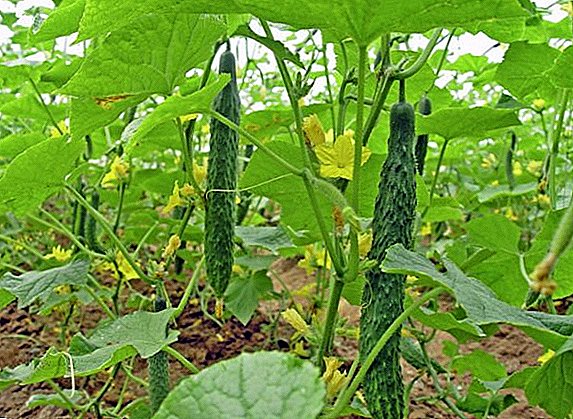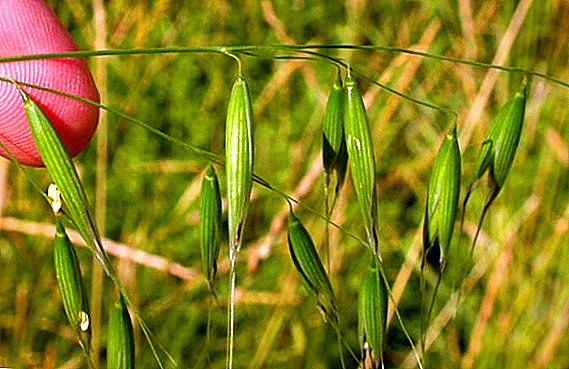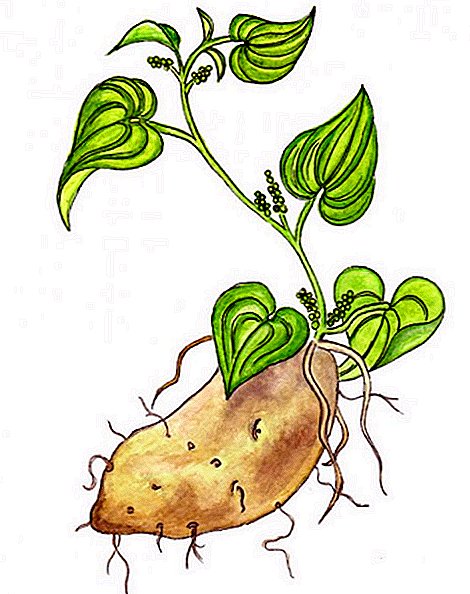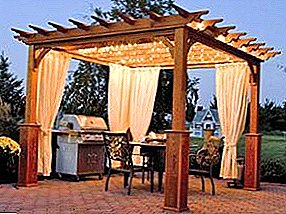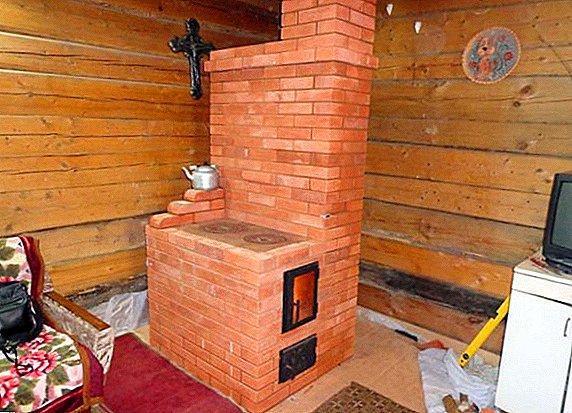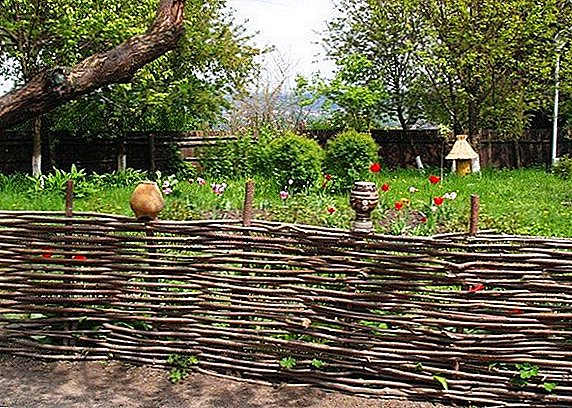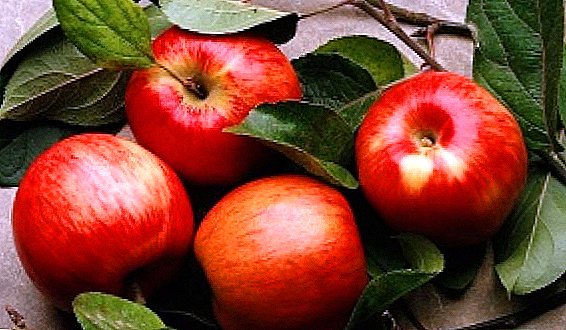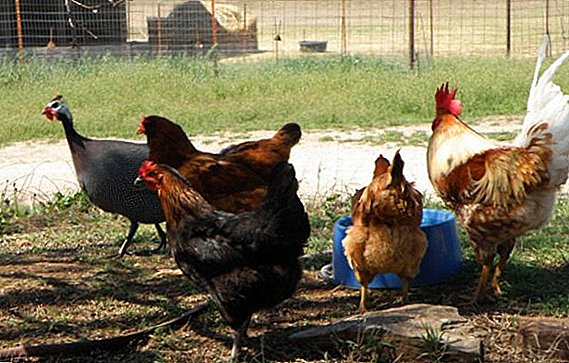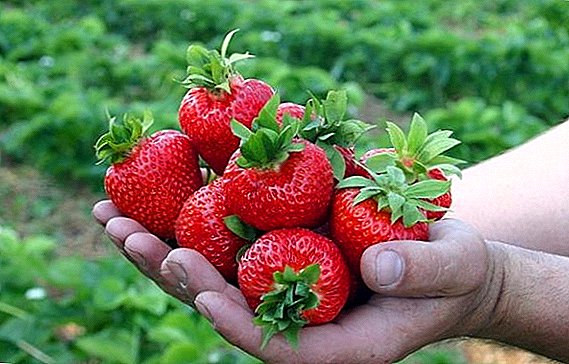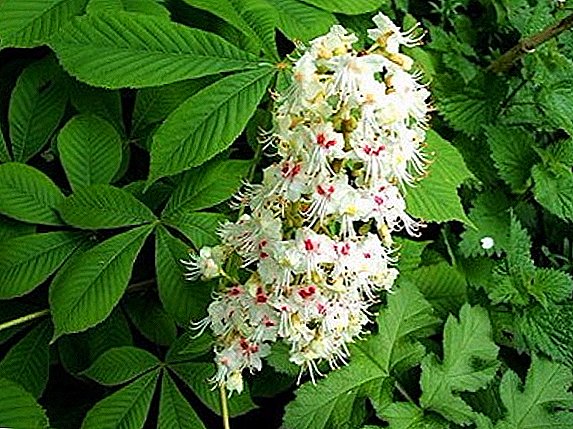 Chestnut - a widespread ornamental tree, a real salvation in the garden and the streets of the city on a hot summer day. However, chestnut is not only a shadow from a broad, deciduous crown, but also a light, pleasant aroma of delicate flowers and fresh, clean air. In addition, some varieties of this tree have tasty, edible fruits. Chestnut is most common in the south and in the middle zone of the European part of the CIS, as well as in the Caucasus and Central Asia. The popularity of growing chestnut grows every year; it is chosen by many owners of personal plots for decorating the landscape.
Chestnut - a widespread ornamental tree, a real salvation in the garden and the streets of the city on a hot summer day. However, chestnut is not only a shadow from a broad, deciduous crown, but also a light, pleasant aroma of delicate flowers and fresh, clean air. In addition, some varieties of this tree have tasty, edible fruits. Chestnut is most common in the south and in the middle zone of the European part of the CIS, as well as in the Caucasus and Central Asia. The popularity of growing chestnut grows every year; it is chosen by many owners of personal plots for decorating the landscape.
Did you know? The chestnut blooms in May, but its pale pink color may also appear in winter, under conditions of an abnormal temperature drop. The fruits of chestnut ripen in early or mid-autumn, some people eat them, they taste like sweet potatoes. Chestnut is also used in traditional medicine: various curative remedies are made from its fruits.
Planting and reproduction of chestnut
Chestnut can grow a powerful, sprawling handsome 30-meter height, while observing the simple measures associated with its planting and care.
Choosing a place
 When choosing a place to disembark chestnut, you need to consider three main factors: space, lighting and protection from the wind. Preference should be given to a plot with a large area, since the chestnut has a powerful crown and root system, which require space for normal development. The distance from the chestnut to other plants or buildings should be at least 5 meters. Chestnut is a rather shade-tolerant tree, but it blooms better in good sunlight. And the last condition: in order to avoid deformation of the chestnut trunk during its cultivation, choose a quiet place, not subject to strong gusts of wind.
When choosing a place to disembark chestnut, you need to consider three main factors: space, lighting and protection from the wind. Preference should be given to a plot with a large area, since the chestnut has a powerful crown and root system, which require space for normal development. The distance from the chestnut to other plants or buildings should be at least 5 meters. Chestnut is a rather shade-tolerant tree, but it blooms better in good sunlight. And the last condition: in order to avoid deformation of the chestnut trunk during its cultivation, choose a quiet place, not subject to strong gusts of wind.
Timing
Any chestnut variety should be planted in spring, in a well-warmed soil. In the fall, planting chestnuts is not recommended, since rodents in the ground often damage the seeds, which leads to the death of planting.
Soil preparation
Chestnuts prefer loose, nutritious, slightly acidic or neutral soils, well drained, with moderate humidity. The tree grows well on black soil or loamy soils with the addition of lime. If the area is clay soil, you need to add sand to the landing pit. If the soil, on the contrary, is sandy, it is recommended to add some clay to it, which will prevent excessive drying. Also as a substrate for chestnut fit a mixture of turf and leaf soil with sand in equal quantities.
Important! Dense soil is not suitable for chestnut, it will not be able to develop a strong root system.
Features of planting seedlings
Usually choose seedlings at the age of three years, sometimes older, since chestnut transplantation can be done before the age of ten, but only in the spring. For planting chestnut seedlings need to dig a planting hole in the shape of a cube with a depth of 50-60 cm and about 50 cm wide. A pit of sand and crushed stone with a thickness of about 30 cm is laid out in the pit. Then a layer of substrate: mixed soil in equal amounts with humus and half a kilogram of dolomite flour. The seedling is placed in the pit, while not deepening the root neck. The landing hole must be elevated by about 10 cm, since the trunk is bare due to the subsidence of the soil. Then the planted plant should be watered well (3-4 buckets of water) and wooden props should be installed to protect it from the wind. Take out the props when the root system of the new plant is strong enough. 
Breeding
Chestnut propagated by cuttings (seedlings) and seed method (fruits). For grafting planting material is prepared in the autumn, when the bark and wood of the mother plant already matured enough, and the buds were formed. For rooting, you need to cut 20-30 cm with 5-7 buds from a branch and place them in boxes with sand or sawdust for rooting.
Seed propagation features
 For the reproduction of chestnut fruits fit well ripened nuts that have fallen to the ground, as long as they are intact and intact. Chestnut seeds germinate only after stratification, which naturally occurs in a pile of fallen leaves, where fallen chestnuts hibernate and then spring up successfully. but stratification can be done artificially. It is necessary to collect ripe fruit in the late fall, soak them in warm water for 5 days, periodically changing the water. This softens the hard walnut skin for better germination. Thus prepared chestnuts are planted in open ground to a depth of 10 cm and insulated with dry leaves. In the spring many of these fruits will germinate. Also, for artificial stratification, you can put a chestnut nut in a tightly closed vessel filled with wet sand, and hide it in a cold place for half a year.
For the reproduction of chestnut fruits fit well ripened nuts that have fallen to the ground, as long as they are intact and intact. Chestnut seeds germinate only after stratification, which naturally occurs in a pile of fallen leaves, where fallen chestnuts hibernate and then spring up successfully. but stratification can be done artificially. It is necessary to collect ripe fruit in the late fall, soak them in warm water for 5 days, periodically changing the water. This softens the hard walnut skin for better germination. Thus prepared chestnuts are planted in open ground to a depth of 10 cm and insulated with dry leaves. In the spring many of these fruits will germinate. Also, for artificial stratification, you can put a chestnut nut in a tightly closed vessel filled with wet sand, and hide it in a cold place for half a year.
Important! The seed propagation method has an important disadvantage: the fruits are damaged by rodents, which eat them directly in the soil, completely destroying the seed material.
Chestnut tree care
For young chestnuts, care and cultivation consist in constant weeding, combined with a shallow loosening of the top layer of the soil, as well as in top dressing. Loosening the soil allows you to saturate the root system of the tree with oxygen and get rid of weeds. In the first year of growth of a young plant, in summer, when the outer side shoots will grow 25-30 cm long, they need to be cut in half. When planting and in the next four to five days, it is necessary to water young chestnut properly, especially during dry and hot periods.
Top dressing and fertilizer
 A chestnut tree is fertilized once a year, in early spring. To do this, dilute 20 g of ammonium nitrate in 15 liters of water and add 1 kg of fresh manure, 15-20 g of urea, about 25 g of phosphorus-potassium-nitrogen fertilizer. Organic fertilizers will also help improve the soil in which chestnut grows and saturate it with nutrients: rotted manure, compost, herbal infusions, humus, in combination with any complex mineral fertilizers.
A chestnut tree is fertilized once a year, in early spring. To do this, dilute 20 g of ammonium nitrate in 15 liters of water and add 1 kg of fresh manure, 15-20 g of urea, about 25 g of phosphorus-potassium-nitrogen fertilizer. Organic fertilizers will also help improve the soil in which chestnut grows and saturate it with nutrients: rotted manure, compost, herbal infusions, humus, in combination with any complex mineral fertilizers.
Before feeding chestnut in the spring, you need to mulch the soil around the trunk 10 cm with a layer of peat, peat compost, sawdust or wood chips. This will not only provide the moisture needed by the root system, but will also serve chestnut as a fertilizer.
How to trim a chestnut
 To ensure chestnut sprawling, lush, deciduous crown, with the onset of spring, you need to prune the upper branches of trees by a quarter of the length. Side outdoor shoots, regrown by the end of the summer, can not be cut. This chestnut procedure should be repeated every year; this is the basis of tree care until it reaches the desired height. When pruning, you need to leave up to 5 side branches to form branches of the first order. After forming the trunk (crown), trimming is not necessary. In the case of excessive thickening of the crown in the summer, you can cut the thinnest branches. All slices need to be smeared with garden pitch. It is also necessary to periodically trim pruned and damaged branches, clean the trunk from shoots.
To ensure chestnut sprawling, lush, deciduous crown, with the onset of spring, you need to prune the upper branches of trees by a quarter of the length. Side outdoor shoots, regrown by the end of the summer, can not be cut. This chestnut procedure should be repeated every year; this is the basis of tree care until it reaches the desired height. When pruning, you need to leave up to 5 side branches to form branches of the first order. After forming the trunk (crown), trimming is not necessary. In the case of excessive thickening of the crown in the summer, you can cut the thinnest branches. All slices need to be smeared with garden pitch. It is also necessary to periodically trim pruned and damaged branches, clean the trunk from shoots.
Winter care, preparation for winter
Now consider how to store chestnut trees in the winter, so that they continue to delight with their lush green crown during the next season. Chestnut is a very frost-resistant tree, and only young plantings in the first 2-3 years need extra care in the winter. Winter protection consists of mulching pristvolnyh circles with a compost layer of 20 cm thick, and the trunk itself is covered with burlap. If due to severe frosts cracks appear on the bark, the damaged areas are treated with antiseptics and covered with garden pitch.
Pest and disease control
Chestnut care also includes measures to combat the diseases to which the plant is occasionally exposed. At times, a leaf spot appears on the leaves of the tree, which indicates disease. fungus powdery mildew or anthracnose. Of the pests tree most often attack bagworms, Japanese hruschiki, drillers. Previously, these diseases and pests did not pose a serious threat to planting, as it was quite easy to care for chestnut in such cases. There was enough treatment to eliminate diseases. "Fundazol" or Bordeaux liquid, and to destroy harmful insects was possible with the help "Karbofos".
 Recently, however, the chestnut is increasingly attacking a new little-studied pest - chestnut or balkan mole. Its origin is unknown, the mole was first discovered in Macedonia in 1985, after which it spread throughout Europe. Measures to combat this pest are still poorly understood, despite the fact that it causes serious harm to chestnuts. The leaves, affected by the Balkan moth, turn yellow, dry and fall off in early summer, as a result of which new ones appear in the autumn. This leads to the fact that in the winter the plant is weakened and freezes. To combat the main chestnut pest, special chemicals are used that need to be injected directly into the trunk as injections. A good prevention is the timely cleaning and burning of the affected leaves, where the pupae of the Balkan moth winter.
Recently, however, the chestnut is increasingly attacking a new little-studied pest - chestnut or balkan mole. Its origin is unknown, the mole was first discovered in Macedonia in 1985, after which it spread throughout Europe. Measures to combat this pest are still poorly understood, despite the fact that it causes serious harm to chestnuts. The leaves, affected by the Balkan moth, turn yellow, dry and fall off in early summer, as a result of which new ones appear in the autumn. This leads to the fact that in the winter the plant is weakened and freezes. To combat the main chestnut pest, special chemicals are used that need to be injected directly into the trunk as injections. A good prevention is the timely cleaning and burning of the affected leaves, where the pupae of the Balkan moth winter.
It is worth remembering that the yellow leaves of a chestnut can appear not only because of pests. Drought and strong wind in summer also lead to drying, burning and twisting of healthy leaves, which subsequently fall off. Very often chestnuts suffer from a dry hot climate in southern latitudes, therefore, organizing planting in such places, you need to carefully consider the issue of soil moistening and plant protection from dry winds.


